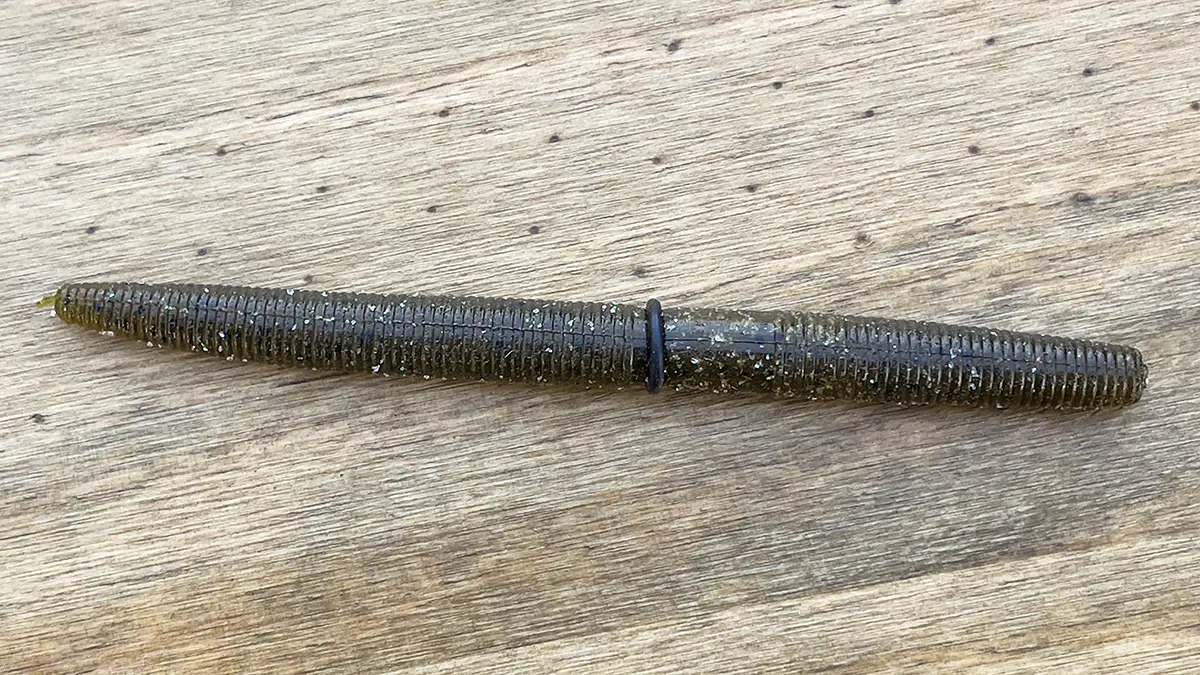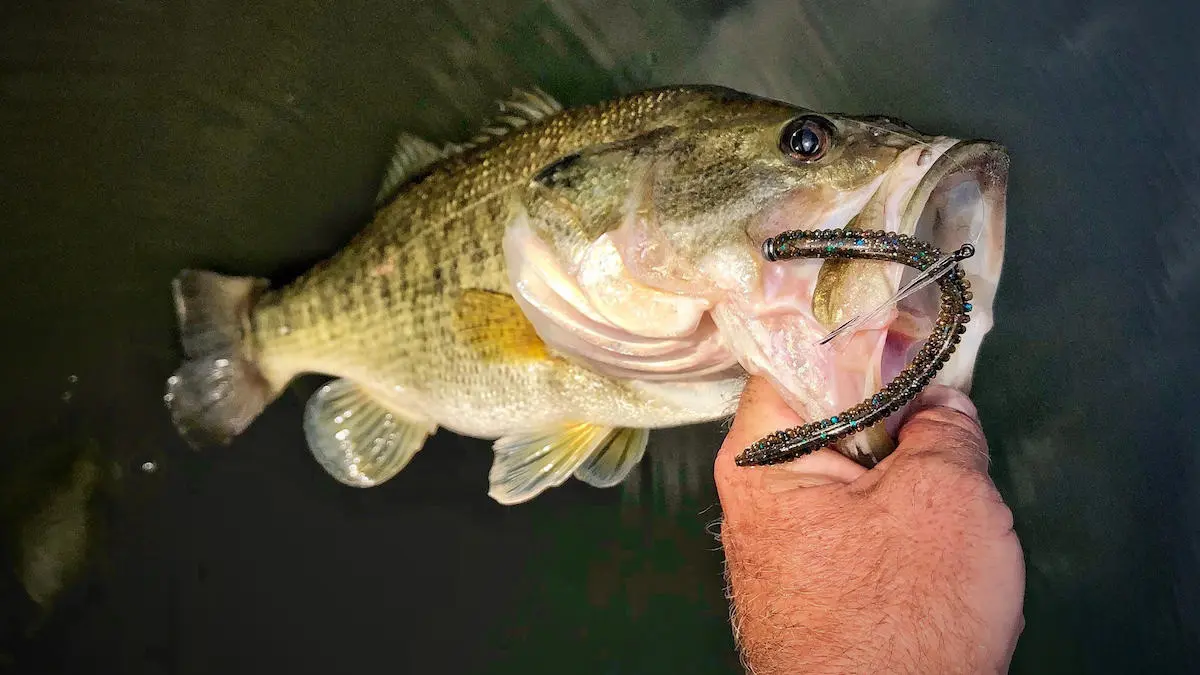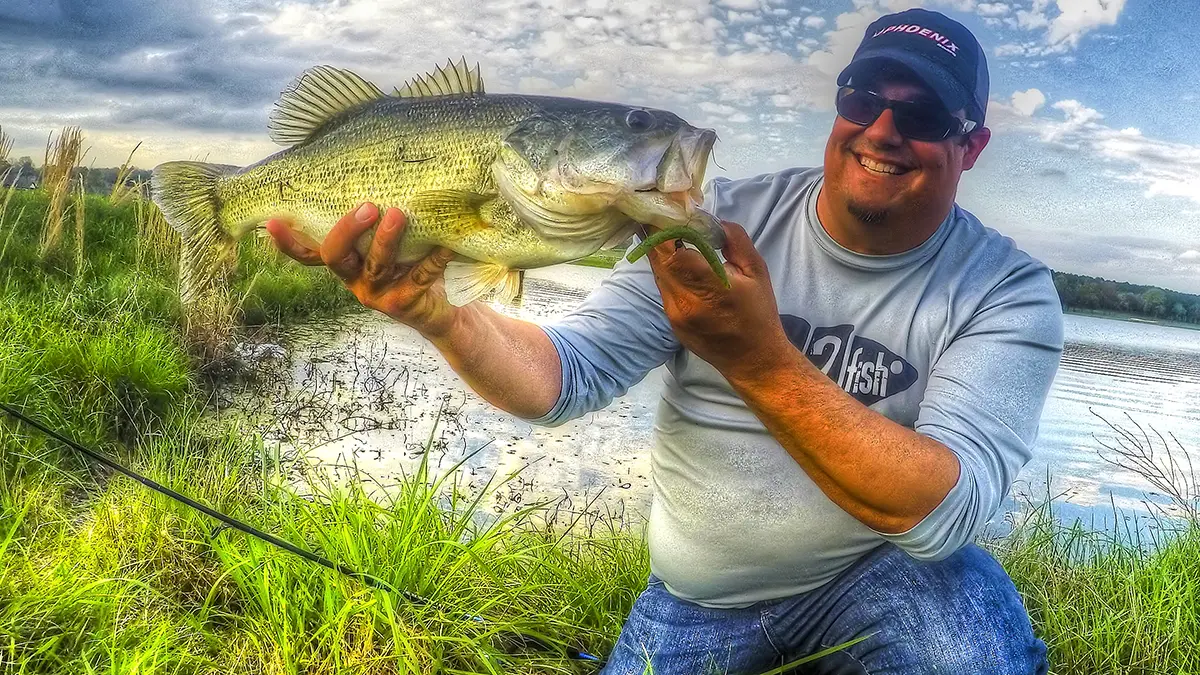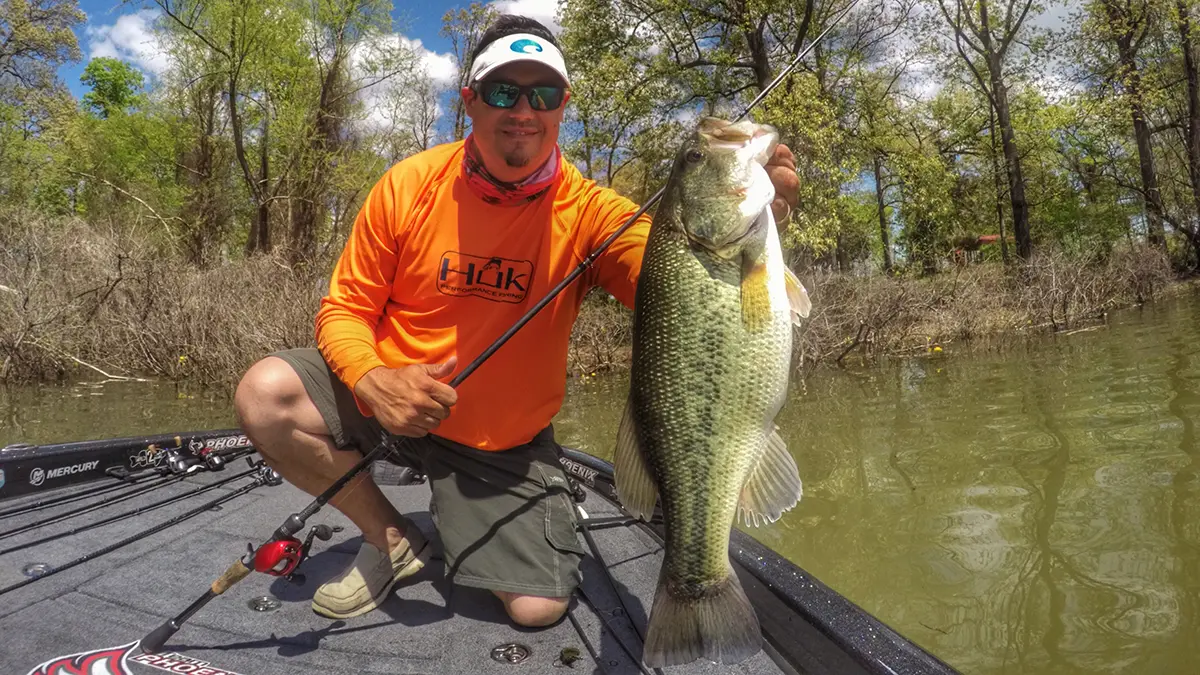It’s spring time and for bass fishing, and one specific bait and rig seems synonymous with this time of year. That’s the wacky rigged soft stick bait. Something like a wacky rigged Senko is just really hard to beat when a bass gets really shallow and looking to spawn.
Not only does a wacky rig produce lots of bass in the spring, but it catches the really big ones. Some of the biggest catches I’ve been a part of have come on wacky rigged Senkos and other stick baits. And some of the biggest bass I’ve seen caught in tournaments have come on wacky rigged stick baits. So it’s a big fish catcher this time of year and it just works.
How to Rig a Wacky Rig
The biggest thing with the Wacky Rig is getting it rigged where you don’t lose a bait on every single fish. Technically, you could just tie a wacky hook on your line, run it through the middle of the line and call it good. And it will certainly work and you will catch a bass.
The problem comes when the bass jumps on the fight or starts throwing its head back and forth. That’s when your worm will be flung off the hook. So most of what we will show you here is simply to keep you using your plastics for as long as possible and save you a bunch of money.
This fishing rig is simple to setup and even more simple to fish. So you basically just need an o-ring, a hook and your favorite soft stick bait. It helps to have a tool to get the o-ring on the worm. Both a pair of spreader pliers or a cylinder tube made to slide the o-ring on one end and the worm into the opening on one in and then roll the o-ring off onto the plastic. I will show images of both ways to help. I’ve seen guys use big split rings in a pinch as well. But they tend to cut through your worm quicker.
Step 1 – Thread an O-ring or sleeve onto the rigging tool
Use the rigging tube or the spreading pliers. We like both the VMC Wacky Rig Tool and the VMC Crossover Pliers. We also like the G7 Worm Tube Pliers. Both make putting an o-ring onto a soft plastic worm a lot easer, and they tear the worm up a lot less.
Step 2 – Slide your worm into the opening of the rigging tool
or into the spread apart o-ring on your pliers. I put the worm half way into the o-ring on the pliers or into the tube. Then when I slide the o-ring off in the third step, it will be in the middle of the worm.
Step 3 – Slide the o-ring or tube onto the plastic worm
Once you get the ring onto the worm, you’re ready for the final step to start fishing it.
Step 4 – Run your hook or wacky jighead under the o-ring
I liked to go into the plastic just a small bit to help hold everything in place a little better.
Wacky Rig Setup
I fish a wacky rigged Senko on bait casting gear. I generally prefer a lighter medium action rod about 6 feet, 10 inches to 7 feet and lighter line 12-pound fluorocarbon line. That gives the bait a very natural fall. I can set a good hook, because it doesn’t take a ton of strength to get a good hookset. In fact half the time, you can just start reeling and pull set into the fish and stick them great. They usually get a Senko deep if you wait too long. So you want a sensitive rod and be a line watcher.
A lot of folks prefer spinning rod and spinning reel in a medium action as well with braided line and a fluorocarbon leader. Or just straight 8-pound fluorocarbon. With a spinning rod, people can skip it a little easier under trees, docks, and more. You can make quiet casts and cover water precisely with it, pitching and skipping it around likely fish holding targets.
Wacky Rig Hooks
My favorite hooks are the trout style hooks that have been adopted as Neko rigging hooks with that offset bend. These work nicely on a wacky rig and the models that have the fiber weed guards do a good job keeping your wacky rig off of stick ups while you fish around.
You can use the small circular hooks that are deemed wacky hooks. But I don’t like the pull on these hooks. These hooks can get rotated easily the wrong direction and you don’t always get as good of a direct pull when you lean into a fish. Means you skin hook and miss a lot more fish.
VMC Ike Approved Neko Hook
I like a No. 2 VMC Neko Hook the best for wacky rigging. Something about that pull point really sticks fish on a wacky rig.
Available at:
Weedless Wacky Rig
Several hooks come with weed guards built in. These work really well and will keep your rig free in most situations. I’ve seen some guys stick the point of small circular wacky hooks into the plastic. But this generally results in the hook not sticking the fish as well either.
VMC Weedless Neko Hook
VMC Weedless Neko Hook (full review) is a great hook for wacky rigging, neko rigging and even finesse swimbait fishing.
Available at:
Wacky Rig Weights
There are several weights made to add to Wacky rigs so you can fish them a little deeper. They are usually small cylinder or teardrop weights that clip on to your fishing hook bend to drop the worm horizontally. Also a little weight will pull the worm down a little faster causing the ends to flap and shimmy more on the fall.
You can also use a weighted wacky jighead also sometimes called a Flick Shake head. These heads have small round hooks on them, sometimes with a weed guard and make fishing a wacky rig deeper and faster a lot more convenient. Usually they are really light wire so again a medium rod and light line will work great.
How to Fish a Wacky Rig
Most of the time we’re going to be fishing a wacky rig in shallow water, without a weight. We will skip it and pitch it to docks, posts, trees, laydowns, bushes, grass, open spawning flats and anywhere else we think a bass might lay up shallow to spawn, roam or guard near and around shallow cover.
I basically will pitch it or skip it. Then I will give it time to sink. The magic with this bait is on the fall. If it hits bottom and now fish has picked up. I will give it 3 short pops on semi-slack line to hop it up off the bottom. A Japanese angler once told me that they believe a wacky rig actually mimics crawfish. When it pops off bottom, the sides fold and it collapses and gets smaller. Like two claws folding up. But then when you stop and let it settle it floats undulating to the bottom like a real crawfish would do. So I think about that as I lift it and drop it.
Many of the bites come on the initial cast or skip. Watch your line for a jump or for it to stop falling early. Also if you see it pulling tight and easing off to one side, reel down steadily to get your line tight and lean into the fish. You don’t need a savage hookset. Just pull set into the fish.
Usually when you hook a fish on a wacky rig, you won’t lose it. There is nothing for the fish to throw the hook. The worm will slide away and then just a weightless hook remains in the fish’s mouth.
Wacky Rig Underwater
Here’s a great look at various ways to rig a wacky rig and what the different rigging methods look like underwater to the fish.
What is a Wacky Rig Good For
The Wacky Rig excels at getting weary, leery and skittish bass in shallow clear water to bite. It works in stained water too, but your opportunities are greater if a fish can see it form a distance. It’s a very unobtrusive offering that looks very lifelike when dropped and popped off the bottom. It’s one of the go-to presentations in the spring time.
It’s great for bank fishing as it’s light weight resists snags, and you are usually targeting fish that have come close to shore to feed, spawn and guard fry.
You can experiment with different plastics, different hook sizes and o-rings and applications but it’s all pretty simple and straight forward. The main thing is to always have one rigged and ready in the spring. You might come across a big bass on a bed, but more often than not you will catch good ones blind casting to likely looking bass holding spots up shallow.



















